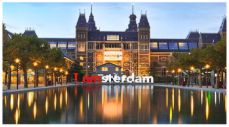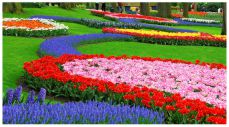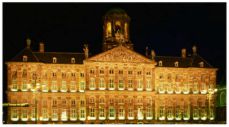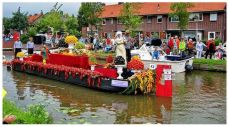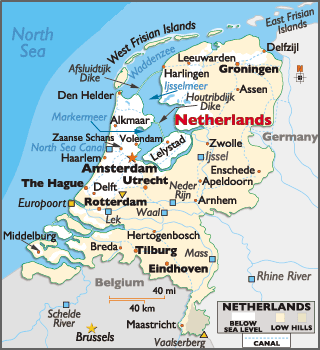Rattling your bike over cobbles, past a line of gabled houses reflected in a mirror-smooth canal…Holland’s just like you imagined it. In the Netherlands’ 17th-century Golden Age, Dutch traders established a global economy — and funded a culturally rich society back home. Tiny Holland may just have the world’s densest concentration of great artists, and shows off their works in several world-class museums. Be sure to venture beyond Amsterdam — take advantage of the efficient train network, which puts nearly every Dutch destination within an easy day trip. Rent a bike and cruise the flat countryside. Wherever you roam, look behind its placid exterior, where you’ll find a complex mix of modern technology, honored traditions, quaint countryside, outrageous architecture, and no-nonsense, globally minded people.
At a Glance
PLAN YOUR TOUR
2-3 Days:Amsterdam 4 Days, add:Delft 5-6 Days, add: Haarlem, The Hague, Rotterdam, and/or Leiden 7-9 Days, add:Towns north of Amsterdam such as Alkmaar, Edam/Waterland, Hoorn/Enkhuizen, and more 10-11 Days, add:Arnhem (with its Kröller-Müller and open-air folk museums), Utrecht, and possible overnight in Otterlo 12 Days, add:If you have a car, it’s worth exploring Flevoland.
Things To Do:
*Amsterdam Progressive world capital with magnificent museums, wondrous waterways, Golden-Age architecture, diverse nightlife, and eye-opening Red Light District.
*Haarlem Cozy, quiet burg with its own top attractions, plus easy access to big-city Amsterdam.
*Delft Picturesque hometown of Vermeer and Delftware with college-town vibe — a good base for day-tripping to The Hague and Rotterdam.
Day Trips
North of Amsterdam
*Waterland Postcard-perfect region with the adorable cheesemaking village of Edam, the tourist depot of Volendam, and the fascinating former fishing hamlet of Marken.
*Hoorn and Enkhuizen Time-warp duo of the Golden-Age merchant’s town of Hoorn and charming village of Enkhuizen, with an open-air museum that preserves lost Zuiderzee culture.
*Alkmaar and Zaanse Schans Holland’s tasty cheese capital — Alkmaar — with its Friday cheese market, and Zaanse Schans, an easy-to-reach though touristy folk museum.
*Flevoland Intriguing province reclaimed from the sea featuring Schokland, a former fishing village now surrounded by dry land.
South of Amsterdam
*Leiden Historic, charming college town that was the Pilgrims’ last stop before Plymouth Rock.
*The Hague Governmental hub with excellent art museum (Mauritshuis), international courts, and nearby beach.
*Rotterdam Europe’s busiest port with soaring skyscraper architecture and 21st-century buzz.
*Aalsmeer and Keukenhof Flower-power destinations with fabulous tulip gardens (Keukenhof, open only in spring) and famous floral auction scene (Aalsmeer).
East of Amsterdam
* Museums near Arnhem Two Dutch treats — the granddaddy of open-air museums (Netherlands Open-Air Folk Museum) and a world-class collection of Van Gogh masterpieces (Kröller-Müller Museum).
*Utrecht Bustling university city with the Netherlands’ largest medieval old town and its best railway museum.
When to Go
Although Amsterdam can be plagued by crowds, the long days, lively festivals, and sunny weather make summer a great time to visit. It’s rarely too hot for comfort.
Peak Season: Amsterdam is surprisingly crowded — and hotel prices can be correspondingly high — in late March, April, and May, when the tulip fields are flowering in full glory. Seasonal conferences can also drive up prices in September in Amsterdam. July and August have typical summer crowds.
Shoulder Season: Late spring and fall are pleasant, with generally mild weather and lighter crowds (except during holiday weekends).
Winter Season: Travel from late October through mid-March is cold and wet in this region, as coastal winds whip through these low, flat countries. It’s fine for visiting Amsterdam, but smaller towns and countryside sights feel dreary and lifeless. Some sights close for lunch, tourist information offices keep shorter hours, and some tourist activities (like English-language windmill tours) vanish altogether.


